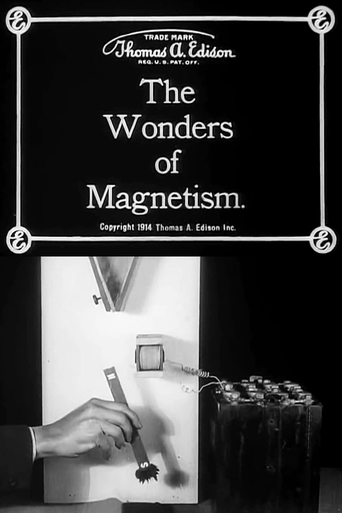cricket crockett
. . . always were a challenge to Edison Manufacturing Company, according to both contemporary critics and subsequent film historians. Only a handful of the 1,200 films churned out by this first American movie studio stood up to the test of time, and Thomas Edison relied upon a legion of patent and copyright lawyers to cling to a market foothold for a quarter of a century in order to cram his cultural agenda down the throats of America. At first, that consisted of a steady diet of sex and violence, reflecting the younger Edison and his crew's nightly "wilding" descents upon New York City after long days of inventing light bulbs in the New Jersey hinterlands. Later, hellbent on shoehorning America into cement houses, Edison settled for what he thought was tame stodginess. Therefore, lacking any wonder of imagination, he turns here to THE WONDERS OF MAGNETISM (7 minutes and 42.75 seconds of science fair "fun" from 1915). Today's first graders from TV-free, internet-free households may find this of passing interest; at least no elephants are electrocuted (a favorite pastime of the younger Edison).
Snow Leopard
This Edison Company documentary makes very good use of the resources of its time, in presenting a series of demonstrations that illustrate the principles of magnetism. The names of the director and everyone else who was involved seem unfortunately to have become lost over the years, but all involved did a good job. Edison himself at one time had a considerable interest in magnetic ores, so it's conceivable that he may even have been involved himself in some capacity or other.The documentary is presented in a style that is still familiar in many movies of its kind. The point of each demonstration is announced (here via inter-titles), and then a demonstration or experiment is carried out that illustrates the principle. In later years, the use of spoken narration would have allowed such a movie to explain everything in much more detail, but little if anything is lost, because each demonstration is set up with noticeable care. The title cards and labels make sure that nothing of importance is missed.This would still hold up well as a presentation of the basic ideas involved, and in its time it would have been among the best and most informative features of its kind.
